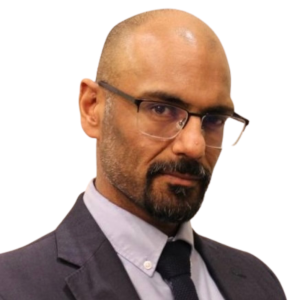What is plastic surgery?
The word “plastic” in plastic surgery has, of course, nothing to do with “plastic” the material. In fact it actually predates its use for the material by a good couple of centuries! Both words have the same derivation – they come from the ancient Greek word “plastikos” which roughly means to alter the form/shape of something. And that’s pretty much what we do… as plastic surgeons we manipulate the body’s tissues (not just skin and fat, but muscle, bone and nerves too!) to achieve three things:
- Heal wounds – for example after burns, trauma or cancer excision
- Improve function – for example reconstruct a child’s nerves that have been damaged during childbirth
- Improve appearance – this can vary from what we would generally consider “aesthetic/cosmetic” such as breast augmentation, to the correction of birth (congenital or developmental) defects, for example Poland Syndrome, in which one side of the chest wall fails to develop properly.
The first two aspects of plastic surgery are generally covered by the NHS in the UK, as are most congenital defects and we would generally label such procedures as “reconstructive”. Currently, though, most of what we would consider aesthetic surgery is not, and tends to be addressed in the private sector. However, there is a grey area – for example, when an adolescent’s breasts mature asymmetrically, this is unquestionably a problem of development, but will often be considered as an aesthetic problem that the NHS will not fund, particularly in the current financial climate within the health service (although there are exceptions).
Plastic surgery techniques
Plastic surgery is a very much a technique based-speciality. A problem is encountered and the surgeon will dip into his or her toolbox to see which technique is most appropriate for the problem
The techniques used during plastic surgery can be thought of as a “reconstructive ladder”:
- Healing by secondary intention – the human body has been exquisitely well designed to heal itself, and very often the best way to treat a wound is to allow it to heal itself, while providing it the best possible environment (e.g. free from infection)
- Healing by secondary intention – this is essentially closing wound edges directly to one another – you would see this, for example, if you had a small cut following a fall, or following the vast majority of surgical procedures. In order for this to be possible, the wound edges must be able to be apposed with sufficiently little tension that they can be held together with stitches alone. What do we do when there would be too much tension or there is actually a lack of tissue? Well, we generally rely on 4 methods – grafting, flaps, artificial materials or tissue expansion
- Grafts – in general this is with reference to skin. A thin healthy skin from an unaffected area of the body is removed and laid on to a healthy wound bed. This only works if the graft is small and thin enough and the bed healthy enough that the graft can get enough nutrition to survive.
- Flap surgery – this is where a piece of tissue from one part of the body is transferred to another, along with the blood vessels that keep it alive; it’s called flap surgery because the healthy tissue usually remains partially attached to the body while it’s repositioned. Because it is carrying it’s own blood supply, and it doesn’t rely on absorbing blood from the bed of where it is going to, and it can be large areas of tissue (not just skin, but fat, muscle, nerve and even bone).
- Artificial materials – sometimes, artificial material can be used to create volume. For example breast implants for aesthetic surgery or following breast cancer.
- Tissue expansion – this is where surrounding tissue is stretched to enable the body to “grow” extra skin, which can then be used to help reconstruct the nearby area.
These techniques are not mutually exclusive, and sometimes in complex cases a combination of techniques can be applied to solve a problem.
As well as these techniques, plastic surgeons also use many other methods, such as:
- fat transfer or grafting – where fat is removed from one area and inserted in another area, usually to correct unevenness
- vacuum closure – where suction is applied to a wound through a sterile piece of foam to draw out fluid and encourage healing
- camouflage make-up or cream
- prosthetic devices, such as artificial limbs
Risks of plastic surgery
As with any type of surgery, plastic surgery has associated risks.
Some procedures carry specific risks, but general risks include:
- pain and discomfort
- bleeding
- infection
- scarring
There is also a very particularly risk with aesthetic surgery in particular, and that is expectation. Many medical treatments have very easily measureable, objective outcomes – cancer excision surgery for example, is usually measured in terms of recurrence rates or survival. But in aesthetic surgery while there are well described methods for measuring results, in truth a good outcome, is (complications notwithstanding) essentially a subjective judgement of “does this look good?” which is intrinsically linked with the question “does this meet my expectations?”.
Medico legal challenges associated with plastic surgery
In a medicolegal context, plastic surgeons are commonly called upon to provide an opinion on scarring and scar management, complications following hand and limb reconstructive surgery, soft tissue injuries and burns management.
In cosmetic surgery there is a key issue of informed consent that arises due to the fact that the surgery is not a medical requirement – the patient must have been clearly informed of the risks associated with their chosen treatment prior to surgery, as well as agreeing reasonable expectations of the end result.

